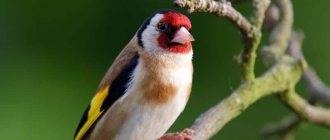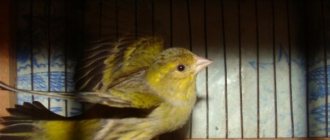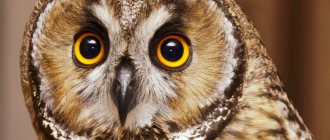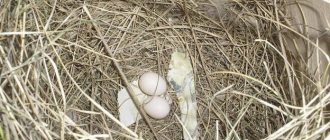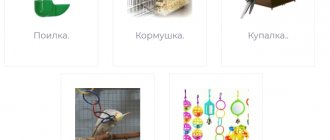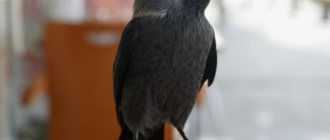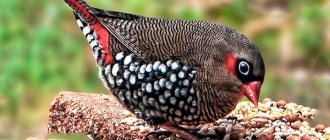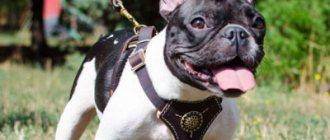A goldfinch can live at home exactly the same as in the wild. This bird is often purchased to enjoy its singing at home. This fragile and lovely creature will become your favorite if you care for it properly. How to keep such a bird at home, what to feed? Let's try to figure out all the important points together.
Goldfinch
Description and characteristics of goldfinches
Goldfinches are not frequent residents of apartments, but sometimes they can be found in people’s houses or apartments. In general, these birds are quite freedom-loving.
Goldfinches are a striking representative of the finch family; these birds are small in size and have much in common with sparrows. Most often, goldfinches live in the southern part of Scandinavia, Finland, they live in Portugal, Ireland, Western Siberia, Pakistan, Afghanistan, and some regions of Africa.
A detailed description of this bird species can be seen in the table.
| Length | About 12 centimeters. |
| Wingspan | From 22 to 25 centimeters. |
| Weight | Up to 20 grams. |
| Plumage color | The classic coloring involves a red stripe on the head - in front and black in the back, with two white stripes on the sides. The goldfinch's wings are bright yellow with black plumage. The tail is black with a white pattern. |
| Lifespan | In the wild, these birds live up to nine years, and in captivity, with good care, they can live much longer - up to twenty-seven years. |
| Does the bird sing | The goldfinch is a songbird that can sing more than twenty different melodies. Moreover, these birds are capable of making rather rude sounds. |
Table 1. Description of goldfinches
It cannot be stated unequivocally that the goldfinch is a migratory bird. Most often, these creatures do not leave their permanent habitat, even when cold weather sets in. Some species of goldfinches can fly towards warm countries. Most often, females fly away, and males remain for the winter in their place of permanent residence.
Appearance of the goldfinch
For the winter, goldfinches can go to Central Asia, to the shores of the Mediterranean Sea.
The singing of goldfinches is worthy of special attention. It is multifaceted and charming. The bird is able to convey a variety of moods with its voice, showing shades that will impress even a professional. Sometimes the bird sings very sweet songs, sometimes it amazes with simple chirping or repetition of biting, sharp sounds.
Life expectancy of goldfinches in nature and in captivity
How long do goldfinches live at home? As a rule, they live up to twenty years, provided proper care and proper feeding. In the wild, these birds rarely live longer than ten, and even more rarely, fifteen years. This is a lot for such a small bird, which can raise a couple more chicks every year.
Habitat and diet in the wild
Wild individuals inhabit deciduous groves and gardens of Europe and Western Siberia, Western Asia and North Africa. At the same time, the bird prefers relatively open areas - you are unlikely to see it in a deep forest (unlike a sparse planting or even a city park). They are considered a sedentary species, although they are capable of migrating over long distances. They often leave their nests to search for food together (flocks of goldfinches are frequent guests of summer cottages and fields).
In April they split into pairs, and by the beginning of summer, nests built from various roots connected by cobwebs are visible on the tree crowns. Around this time, transparent green eggs with red spots on the blunt edge appear in the nests. On average, each clutch consists of 3-5 eggs.
Did you know? Sparrows can be considered the smartest birds, if we take only the ratio of total weight to brain mass. It is estimated that out of 100 g of total weight, the brain accounts for 4.5 g.
The female incubates them for about two weeks and feeds the offspring with aphids or small larvae for the same amount of time. At the age of 15-20 days, the chicks try to leave the nest, but not for long (they are supported by their parents for up to a month).
Find out more about keeping such birds as: siskin, crossbill, canary, necklace parrot, budgerigar, kakapo parrot, cockatiel, gray gray macaw, rosella, amazon and black raven.
The basis of the diet of an adult bird is the seeds of grasses, shrubs or trees. They love achenes of burdock, horse sorrel and thistle. They do not refuse worms with larvae, although this is more “baby food”. The question of what the free goldfinch eats has another solution. If there is a sparse supply of seeds in the chosen place, birds without any problems switch to eating the leaves and stems of small weeds.
Is the goldfinch suitable for home keeping?
Before we look at the question of how to keep a goldfinch at home, you need to understand whether it is even possible to keep this bird at home.
Taming the goldfinch
Experts note that the goldfinch tolerates being kept at home very well, the main thing is to observe two nuances. The bird must live alone, always in an aviary or spacious cage. Only comfortable conditions and constant attention will guarantee the long life of this bird in captivity.
Let's look at the advantages and disadvantages of keeping these birds at home.
Pros:
- the brightness of the bird;
- the opportunity to listen to melodic trills all year round;
- smart and curious bird;
- sociability;
- high level of learning ability;
- unpretentiousness in food and living conditions.
Minuses:
- if you catch a goldfinch in nature, it is unlikely to sing; it is better to buy an individual in a store;
- Birds of different sexes cannot be housed in the same cage;
- Chicks should not be kept together, otherwise they will quarrel over food and home.
If the disadvantages don’t bother you, feel free to get yourself such a pet.
Natural enemies
Greenfinches are not particularly agile in the air, which is why they often become victims of small predators such as ferrets, weasels, wild cats and others.
Return to content
Where and how to keep a goldfinch
Keeping a goldfinch in a cage
Keeping a goldfinch at home requires attention.
It is important to meet a number of conditions here:
- purchase a suitable cage;
- release the bird to fly around the house;
- feed your pet correctly;
- water the bird in a timely manner;
- create conditions for the goldfinch to reproduce.
Let's look at the important features in order.
What kind of cage is needed?
To make your bird comfortable in your home, you need to prepare a suitable cage for it. The minimum possible size of such housing should be 50 by 30 centimeters (but it is better to take a cage with a reserve, because the bird will grow, albeit slightly).
Cage and accessories for goldfinches
It is advisable that the cage have two levels. Goldfinches are very active birds and need free space to fly. At the second level, the bird can run and hide from the paws of curious pets or children.
The base of the cage should not have nicks or burrs; if it is smooth, the chances of injuring the bird will be reduced to zero.
There should be an interval of no more than one to one and a half centimeters between the bars of the cage. If the distance is greater, the bird may be injured. In addition, a cat's paw may penetrate here, or the bird will try to escape from the cage.
How to equip the cage:
- hang the feeder;
- secure the sippy cup;
- hang a swing;
- place perches at different levels (they should not have jagged edges so that the bird does not develop foot disease);
- put a small pool for bird bathing.
Bath container
Important! The cage with the goldfinch should be located away from drafts, it should be well lit, but protected from direct sunlight.
The goldfinch's cage needs to be cleaned weekly.
It should include the following activities:
- wipe the perches with disinfectants (choose those that are safe for birds);
- Wash the tray and food container with detergent;
- treat all corners, twigs, and nooks with detergent;
- rinse all parts under running cool water and dry outside for a couple of hours.
The room where the bird is located should be at normal air temperature. The main thing is to ensure that the air is not too dry or overly humidified. Therefore, the cage should be placed not near the battery and away from damp corners.
Should I let the bird fly at home?
In order for goldfinches to delight you with their singing at home, you need to create for them the most comfortable conditions, close to their wild habitat. What kind of bird can do without flying? Goldfinches also love to fly.
Flight of the goldfinch
Therefore, let your pet fly several times a day. For its convenience, prepare places where the bird can sit, rest and look around. The duration of one flight can be up to ten minutes.
While the bird is flying, remove sharp, heavy objects from surfaces so that the pet does not harm itself.
Bird walks
We have already mentioned that goldfinches must fly outside the cage. Free flight around the house or apartment is a prerequisite for a healthy lifestyle for a pet. This is due not only to the fact that the bird is bored and needs to spread its wings, but also to its feeding habits. It's no secret that goldfinches get a lot of fat. This means that they are susceptible to obesity. To avoid such a problem, it is necessary to give the bird more greens, fruits and vegetables. And the goldfinch must fly without fail. Some owners say that they have managed to tame their pets so much that they fly into the cage only to sleep at night. Birds fluttering around the apartment are much more interesting than sitting cooped up. True, restless researchers can easily ruin something. But absolutely all pets are mischievous.
If you allow your bird to move around the apartment, it will probably choose places such as closets, high cabinets and other high places. This can be explained quite simply, because in the wild, goldfinches prefer to be in tall trees. An interesting fact is that goldfinches, no less than parrots, adore mirrors. If there is a mirror in the room where your friend lives, your pet will probably be constantly hovering around it. Well, where the goldfinch flutters, there is always garbage.
Features of feeding goldfinches at home
What to feed the goldfinch at home? You will find the answer to this question in the table.
| What to feed the goldfinch | Ready-made mixture of grains - you can prepare it by mixing millet, burdock, dandelion and rapeseed in equal quantities. To this composition add sunflower grains, plantain, hemp. Pine and spruce seeds may not be to the taste of all goldfinches. Live food is mealworms and ant pupae; you can give the bird up to four of them per day. |
| What not to give to a bird | Sweets are strictly prohibited - they can cause digestive upset in the bird. |
Table 2. Rules for feeding goldfinches
Treats and mineral supplements
Sunflower seeds for goldfinches
To please the bird, you can treat it with a special porridge for insectivores. It can be offered up to three times a week.
Occasionally you can offer the goldfinch a salad. It is made from a hard-boiled egg, which needs to be finely chopped. Boiled grated carrots and some crushed crackers are added to it.
Major diseases
What causes goldfinches to die from at home? Most often this happens due to injuries, when birds fly around the apartment and crash into something sharp or drop something heavy on themselves. If the bird has injured a limb, it needs to be immobilized and consulted with a veterinarian.
Diseases of goldfinches at home:
- down feather eaters are parasites that cause feathers to thin out, they look cut, with tiny lines: you can get rid of them using special disinfectant sprays;
- knemidocoptic mange - a mite that attacks the beak or paws; the bird can be relieved of itching by using Vaseline or a special ointment;
- coccidiosis - parasites in the intestines or kidneys; for treatment, the use of vitamins and antibacterial drugs is indicated;
- pododermatitis - itchy blisters appear on the paws, which are treated with antiseptics, and the bird’s condition is alleviated with soda baths;
- neoplasms, tumors - require mandatory consultation with a veterinarian.
Veterinarian
To keep your pet healthy, you need to monitor its safety and strictly observe hygiene.
Physical health
Carefully monitor the well-being of your feathered pet. Some common problems include injuries, which should promptly contact your veterinarian.
Other possible ailments include parasites that damage the bird’s plumage: ticks, fleas. Special sprays will help eliminate them. Other dangerous enemies of goldfinches are pests that live in the intestines, as well as infectious diseases. You cannot cope with them without the participation of a doctor, so at the first suspicion of an illness, rush to the veterinary clinic.
To prevent the development of diseases and the penetration of parasites, follow the rules of poultry keeping and basic hygiene. To do this, regularly disinfect the cage, keep the bird’s body clean, and feed it only proven food. Be sure to wash your hands before changing food and water. Otherwise, the goldfinch is at risk of salmonellosis.
A healthy individual in nature lives 15-17 years. There are cases where the domestic goldfinch lived up to 20 years.
Reproduction of goldfinches at home
Breeding goldfinches at home is possible. In the wild, these birds begin nesting by the end of spring, if they live at home - this process can go on all year round.
Conditions for nesting
In order for a bird to want to lay eggs, it is necessary to place natural material in the cage from which it can make a nest. These can be pieces of tree bark, lichen, meadow grass, wool. From this material, the female will almost immediately begin to build a nest in which she will lay eggs.
Pair of goldfinches
Laying and incubating eggs
When the nest for the goldfinch living at home is ready, a male is released into the female’s cage.
When the mating season has passed, the male can be returned to his cage. The female will incubate the eggs for two weeks.
Caring for chicks and feeding them
After the chicks hatch from the eggs, they are kept with the female for 16-20 days, then they need to be moved to a separate home.
You can feed the chicks with insects and special grain mixtures.
Goldfinches: male or female
Many people have difficulty determining the sex of goldfinches. After all, these birds have few distinctive features based on gender. And yet there is a difference.
Male goldfinches are slightly larger than females, their beaks are more massive, and their colors are brighter.
The female goldfinch's cap is lighter. It has feathers with gray hair, and the red border on the head does not reach eye level.
On the crown of the female there is a special mark in the form of a gray cross.
If you decide to breed goldfinches, remember: by the 20th day of life, the chicks are already quite independent. As they grow up, they exhibit leadership qualities, which often leads to competition for territory. For this reason, grown-up chicks must be housed in separate cages. Males and females are ready to mate in the spring.
You will help us a lot
, if you share the article on social networks and like it. Thank you for that.
Subscribe to our channel.
Read more stories on the Bird at Home website.
Features of taming goldfinches
The goldfinch is a domestic bird, easily tamed. In order for your pet to get used to you faster, it is important to spend time next to him more often. The bird needs to see who is putting food on the feeder for it when it begins to trust you faster.
Goldfinch chick
Over time, when the chick gets used to it, you can start teaching it to feed by hand.
Birdsong
Goldfinches are songbirds. Their repertoire can include more than 20 melodies. An interesting fact is that goldfinches can make not only pleasant melodic sounds, but also rude and unpleasant ones. Only canaries can compete with goldfinches in singing. By the way, goldfinches do not sing during the molting period. It has been noticed that females sing more skillfully and beautifully than males. It has been noticed that females have slightly more faded plumage than males. That's why some people prefer to take boys. But this is just a matter of taste.
Where can I buy goldfinch
You can buy goldfinches second-hand or contact experienced bird catchers or a pet store. The second option is preferable because such a purchase has almost no risks. You will definitely get a healthy bird that will have minimal communication skills and proximity to humans. If you buy a bird from your own hands, you cannot guarantee that it will easily get used to your home and will not be infected with parasites (some of them can be dangerous to people).
Goldfinches can be purchased in pairs, or one bird can be purchased. The main thing is to house the birds separately, in different cages. Otherwise, the pets will quarrel and be aggressive towards each other.
Acquiring a goldfinch
Possible problems when keeping goldfinches at home
To ensure that goldfinches are kept without problems, pay attention to the useful recommendations of professionals.
Helpful Tips:
- To prevent the bird from getting sick, maintain hygiene and the rules of keeping it;
- place the cage only away from drafts and direct sunlight, but not in the dark or near places with excess moisture;
- The goldfinch is unlikely to like it near the radiator; it is better to choose a place away from heating devices;
- the goldfinch should eat twice a day; if the bird is weakened or sick, it can be fed more often;
- in winter, birds need to be given special supplements with valuable components to maintain immunity strength and health;
- the cage should always have a full sippy cup with clean water, which needs to be changed regularly;
- you need to wash the cage with products without strong odors; after general cleaning, it is better to ventilate the bird house for a couple of hours in the fresh air;
- in order for the bird to maintain its cleanliness, you need to put a special container in the cage where it can bathe;
- If any disturbing symptoms appear in the bird, such as refusal to eat or sleepiness, the pet should be shown to a veterinarian.
Singing Goldfinch
Today, in many large cities, it is not a problem to find an experienced ornithologist who will help you figure out how to keep the bird healthy and happy.
Reviews from owners about keeping goldfinches at home
Goldfinches owners leave the following reviews about their pets:
- keeping poultry requires financial costs;
- With the appearance of this pet, I had to clean the apartment more often;
- the bird sings pleasantly, but sometimes begins to do so right at dawn;
- If you catch a bird with both hands, it can pretend to be dead - a very interesting trick.
A goldfinch at home is always joy, hubbub and pleasant singing. To make your bird please you every day, pay attention to its arrangement, create suitable conditions for it, and select the right food.
